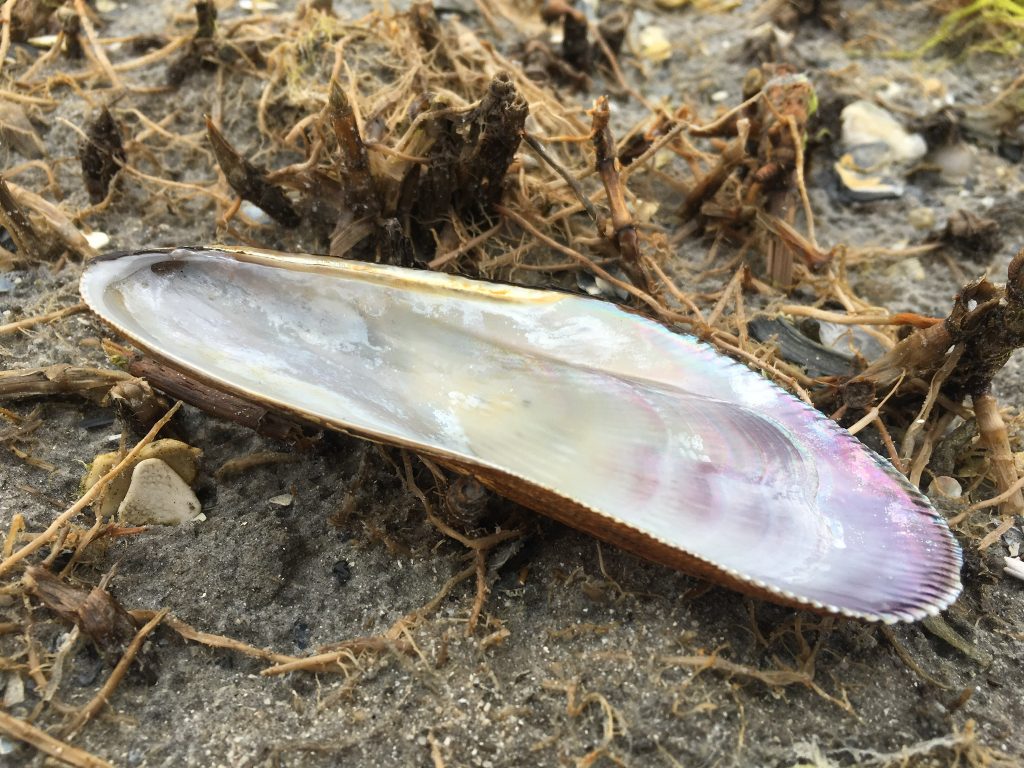The beach can be treacherous, not only for the temperamental nature of the ocean, but for the earth as well. Left to bake under a sweltering summer sun, the sand becomes scalding, ready to burn any unsuspecting feat not sheathed in a shoe. But even worse is where I’ve found myself now…
The jagged remains of scorched mussel shells protrude from a spongey deposit of ocean bred peat that spans for several yards over the base of the inlet. The charcoal colored earth has the shape of something oozing and the smell of something dead. Alert as I am when stepping onto the slick surface, needles of shell still prick at my feet; the smallest shards are impossible to escape, but the larger ones, at least, can be narrowly avoided. I tiptoe around them with the upmost care, stopping only briefly to admire their pearly interiors that glisten among the muck.

Dull ground at last meets my skin as I come to a shallow carpeting of water. Only several inches deep, the ground is easily perceived. It is similar to that which came before, but rather than mussel fragments, this earth is riddled with an onslaught of circle-like splotches. A closer look reveals them to be shells—shells which, elsewhere, would be colored shades of red, orange, white, and cream, but here conform to the same murky gray that is everything in sight.
For a time, the shells do nothing. Or, rather, they appear to do nothing. I crouch down to analyze one nearest me. After a moment, it works. I stand back up to stare down the whole lot, until they are no longer so still as the water they inhabit. Their movement is painfully slow, easy to overlook or pass off as the result of some steady current that does not exist. But once you’re able to understand one as a mobile being, bit by bit they all come to life. I scan the water for a particularly large specimen when my eyes land on (what I imagine to be, beneath the grime) the shell of a banded tulip snail, since departed. Reaching towards it, my hands touch a soft and slimy surface. I feel a rapid movement shoot through the shell as I turn it over and bring it close to my face.

Three legs and one claw of a green banded hermit crab remain visible outside its home. The tip of my finger nudges a single limb and they all retract with a “shwp” sound and one swift movement. Unlike the tulip snail, this crab does not possess operculum on the base of its foot, which would provide a sort of door to its dwelling. Instead, it must rely its ability to condense into virtual nonexistence while retracted in its shell.
I consider the hermit crab’s reliance on another species, the fact that it could not have evolved as it has, if not for the existence of sea snails and their homes. Though we consider ourselves independent and separate from the natural world that surrounds us, humans are much the same way. To exist is to depend upon the Earth from which our species was born; it is more than our home, it is our means of existence.
Source:
http://www.mitchellspublications.com/guides/shells/articles/0072/